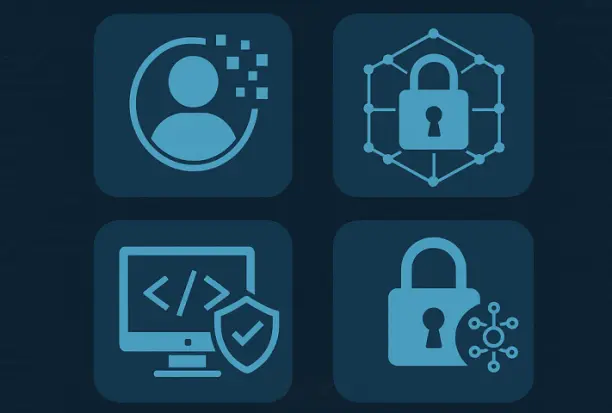Top Web Security Trends in 2025: How to Protect Your Website from Modern Cyber Threats

Introduction
As we move further into 2025, the digital world continues to evolve—and so do the threats that come with it. Web security has become more crucial than ever before, especially with the rise of AI-powered attacks, zero-day exploits, and increasingly sophisticated phishing campaigns. Whether you're a small business owner, a developer, or a digital entrepreneur, staying updated with the latest trends in web security is essential to protect your website, your users, and your reputation.
In this article, we will explore the top web security trends in 2025, including AI-based threat detection, zero trust architecture, secure DevOps (DevSecOps), and post-quantum cryptography. We’ll also share actionable tips to help you implement these technologies effectively.
1. AI-Powered Threat Detection and Response
Artificial Intelligence (AI) and Machine Learning (ML) are transforming web security. In 2025, more companies are deploying AI-driven security solutions to detect anomalies in real time, such as unusual login patterns, malicious bot activity, or data exfiltration attempts.
Why it matters: Traditional security tools are no longer enough to keep up with modern threats. AI helps automate detection and reduce response time, improving overall resilience.
2. Zero Trust Architecture
Gone are the days when securing a perimeter was enough. The Zero Trust model assumes that no user or device should be trusted by default, even inside the network. This principle of "never trust, always verify" is now a standard practice for enterprises and cloud applications.
Key practices:
-
Continuous authentication
-
Least-privilege access
-
Micro-segmentation of services
3. DevSecOps: Integrating Security into Development
DevSecOps is the integration of security practices into the DevOps process. In 2025, developers are no longer waiting until deployment to fix vulnerabilities—they're embedding security into every phase of the software development lifecycle (SDLC).
Popular tools:
-
Static Application Security Testing (SAST)
-
Dynamic Application Security Testing (DAST)
-
Software Composition Analysis (SCA)
Benefits:
-
Early vulnerability detection
-
Faster remediation
-
Better compliance with industry standards like OWASP and ISO 27001
4. Post-Quantum Cryptography
As quantum computing advances, existing cryptographic algorithms like RSA and ECC may become obsolete. That's why post-quantum cryptography (PQC) is gaining attention as a proactive measure.
What to expect in 2025:
-
Adoption of quantum-resistant algorithms
-
NIST recommendations for cryptographic transition
-
Hybrid encryption models combining classical and quantum-resistant methods
5. Web Application Firewalls (WAF) Are Smarter
Modern Web Application Firewalls are no longer just about blocking IP addresses. They use AI and big data analytics to make context-aware decisions, filter traffic, and protect against SQL injection, XSS, and other OWASP Top 10 threats.
Top WAF providers in 2025:
-
Cloudflare WAF
-
AWS WAF
-
Imperva
6. Secure APIs: A Growing Focus
APIs are the backbone of modern web services—but they are also prime targets for attackers. In 2025, API security is a top priority, with measures such as:
-
API gateways with built-in rate limiting
-
OAuth2 and JWT authentication
-
Schema validation and input sanitization
Conclusion: Stay Proactive, Not Reactive
Web security in 2025 requires more than just installing a firewall or updating your antivirus. It demands continuous learning, automated tools, and a security-first mindset across your development and operational teams.
By embracing trends like AI-driven security, Zero Trust, DevSecOps, and quantum-safe encryption, you can stay ahead of modern threats and ensure your website is protected—now and in the future.
Suggested Readings

Leave a comment